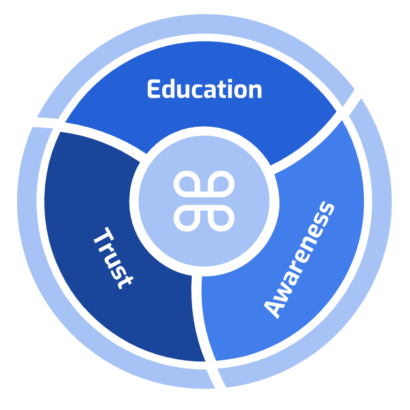The New B4UFLY Celebrates Its First Anniversary. Here’s What’s Next.
One year and 5 million airspace safety checks later, the B4UFLY relaunch has been a success for all involved. Reviews are 4 and 5-stars, and operators are using the app in record numbers. Yet, we’re just getting started with the total impact that B4UFLY can have for not only recreational fliers, but also the multitude of low-altitude airspace stakeholders — from cities and states to regulators and neighbors.
Without question, recreational pilots have proven that they will use intuitive tools proactively, adding to the safety of the National Airspace System (NAS). In future iterations of the B4UFLY application, we’ll be working with the FAA to bring more innovation and education to what is already the largest group of airspace users.

Last summer we saw a surge in airspace activity on Kittyhawk with the launch of B4UFLY, as well as the release of LAANC airspace authorizations for recreational users. After some normalization and then typical winter seasonality (including a Christmas bump), airspace activity dipped briefly as shelter in place took effect across the country, albeit predominantly for recreational fliers as our enterprise data set continued to set record numbers each month in 2020.
Without question, recreational and commercial drone operators are more educated and situationally aware of their airspace than ever before and they are taking advantage of capabilities like LAANC to fly safely and compliantly.
The drone industry is going through a very health evolution, focused less on hardware specs and more on the job at hand. Whether that’s the new Skydio trying to keep up with my five-year-old daughter through the San Francisco fog or the new Parrot Anafi USA inspecting critical infrastructure in the Texas heat, flights are scaling and we’re humbled for the Kittyhawk platform and our patented airspace management capabilities to play a foundational role in so many *compliant* operations. Because safety and compliance are at the core of what we do, we’re continuing to work across our industry in leading on education, awareness, and shared best practices for the health of the National Airspace System.
For a relatively new technology, it’s sometimes hard to comprehend that the sheer number of UAS operations have eclipsed traditional aviation. For example, in just the US, there are at least 3x more “uncrewed” pilots than traditional “crewed” pilots. Furthermore, there are upwards of 10X more UAS aircraft than traditional aircraft. Yet, airspace data and related communications are still primarily geared towards traditional use cases. In the next phase of B4UFLY, Kittyhawk will be focusing on aligning our three pillars of airspace safety — Education, Awareness, and Trust — as we work to integrate a UAS mindset to airspace data and engagement.
“The relaunch of the B4UFLY app has demonstrated how a successful public-private partnership can be a force for public good and help further the integration of UAS into our national airspace,” said Jay Merkle, Executive Director, FAA UAS Integration Office. “Any opportunity to reach UAS operators and educate them about rules, regulations, and safety best practices is a benefit to everyone who flies.”
In future updates of B4UFLY, we’re working on ways to better inform and engage with our users. A lot of the feedback we receive centers around understanding airspace advisories and rules, uniquely how local or community rules interact with broader federal regulations. The concept of controlled and uncontrolled airspace is not evident to new remote pilots. Answering questions like when LAANC is required, or considerations when flying near uncontrolled airports are areas that will be top of mind for new designs and innovations.
We’ll also be working on ways to bring an element of crowdsourcing and feedback to aid in the development of airspace understanding and safety. Particularly with several new rules and regulations on the horizon, from Remote ID to recreational knowledge tests, Kittyhawk will be working with the FAA to make sure that B4UFLY can serve its community with information and capabilities that result in increased awareness and more compliance.
As always, you can reach out to us with feedback directly in the B4UFLY app for Android and iOS, and if you have feedback for data submission, check out this form here.
Jon Hegranes - Aloft CEO
Jon is the Founder & CEO of Aloft, the market leader in drone airspace systems & UTM technologies. Aloft’s patented technology is used in today’s leading recreational, enterprise, and government drone applications.
Jon is a certified commercial drone pilot as part of FAA Part 107, the founder of the Drone Advisory Council, and is an active member of other industry groups, including GUTMA, NBAA Emerging Tech, the FAA’s Advanced Aviation Advisory Committee (AAAC) and working groups, and is a founding member and data working group chair of the FAA Drone Safety Team. He’s a self-taught iOS developer, writes about drone topics for technology news outlets including VentureBeat, TechCrunch, and Forbes, and regularly speaks at industry events such as Commercial UAV Expo, 2B Ahead Future Congress, and DJI AirWorks. Jon graduated from TCU with a major in finance and received his MBA from Thunderbird Global School of Management (ASU). Jon has served on multiple FAA Advisory and Rulemaking Committees (ARCs), including drone detection, counter UAS, and Beyond Visual Line of Site (BVLOS).



